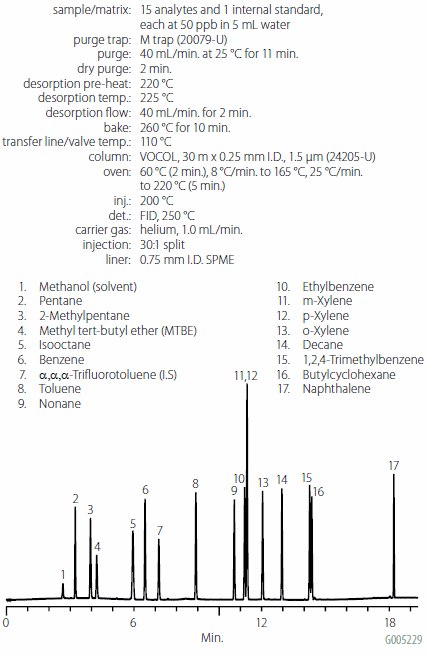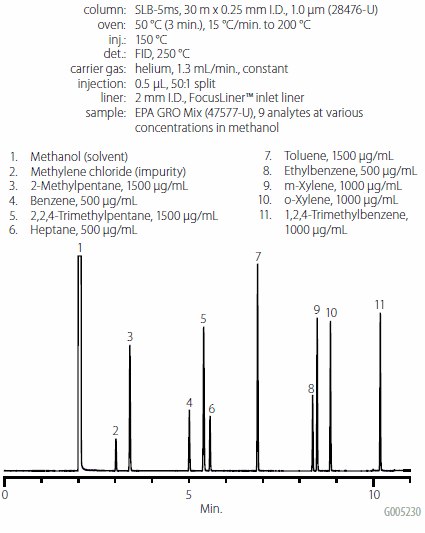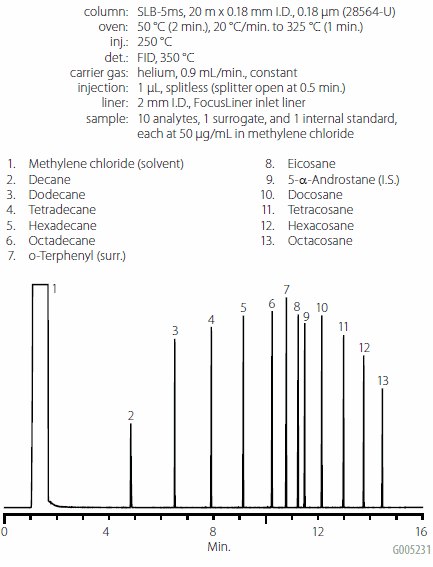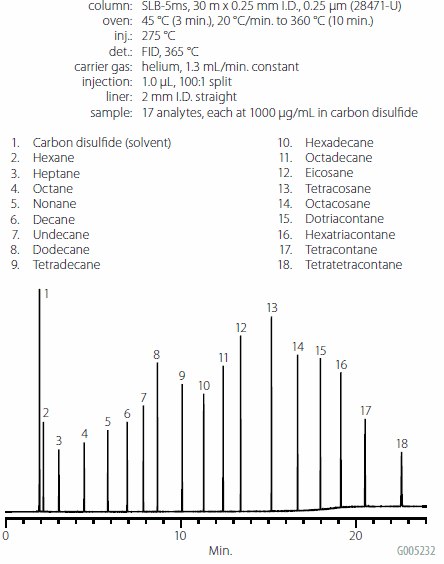DRO, EPH, ETPH, GRO, PRO, PVOC, STARS, TPH, VPH? Help, I’m Trapped in Alphabet Soup!
Introduction
The analysis of samples resulting from fuel and oil spills is different from the analyses routinely performed by either a petroleum or an environmental testing laboratory.
- Many petroleum methods require identification and quantitation using pattern recognition against known reference fuel/oil standards. This is possible when the fuel/oil is relatively pure (such as when contained/protected in a drum or tank).
- Most environmental methods require individual analytes to be identified and quantified. The complex nature of many fuels/oil tends to mask the detection of individual analytes at low levels.
Once a fuel/oil is released into the environment, two factors may contribute to a decrease in its integrity:
- If more than one fuel/oil type is present, it may be impossible to use pattern recognition because the analyte ratios may not match any reference fuel/oil standards.
- As the fuel/oil is weathered (evaporation of lower molecular weight compounds and/or degradation from UV rays or oxygen of some or all of the compounds), it becomes very hard to identify fuel/oil type because the analyte ratios may no longer match reference fuel/oil standards. Also, the quantitation of weathered patterns in the samples to non-weathered reference standards is inaccurate.
For soil and water samples collected due to off-shore oil spills, leaking railroad tanker cars and highway tanker trucks after accidents, and underground storage tank (UST) remediation at service stations, it may be preferred to measure contamination by carbon range, instead of by fuel/oil type or individual analytes. The United States Environmental Protection Agency (US EPA), United States Coast Guard (USCG), American Society for Testing and Materials (ASTM), and several States have published methodologies for these purposes.
Terms and Definitions
Several terms associated with the sampling and analyses of environmental samples for fuels/oils are currently used. Because there are many agencies with methods, there are many terms, resulting in ‘alphabet soup’ due to the vast number of acronyms. Also note that the same term may be used by multiple agencies but with slightly different meanings. While not inclusive, Table 1 represents an attempt to define some of the most common acronyms. While there are many methods, they can be grouped into three categories:
- Gasoline Range Organics (GRO): The GRO-like methods are for volatile analytes, and require purge and trap or direct injection
- Diesel Range Organics (DRO): The DRO-like methods are for semivolatile analytes, and require solvent extraction
- Total Petroleum Hydrocarbons (TPH): The TPH methods are for the heavier volatile, the semivolatile, and some heavier analytes, and require solvent extraction
There are many terms, resulting in "alphabet soup" due to the vast number of acronyms.
Some pertinent terms include:
TPH ERO (Total Petroleum Hydrocarbons, Aromatic Fraction), is used to assess specific hydrocarbon levels in soil and water, assessing the extent of hydrocarbon contamination in areas affected by petroleum spills or leaks.
Star drops refers to the pattern of oil dispersion in water. When oil is spilled on water, it can disperse and form a pattern that resembles the shape of a star, with different arms extending from a central point.
▲ Wisconsin defines the PVOC analyte list as the Wisconsin GRO list minus naphthalene.
♦ STARS is a State of New york document that provides guidence on the handling, disposal, and/or reuse of excavated pertroleum-contaminated soil, with analysis by GS-MS per US EPA Methods 8260, modified with short, specific analyte lists.
GRO-Like Analysis by Purge and Trap
Analysis of the volatile portion of fuels/oils typically requires calibration with several n-alkane and aromatic compounds. Some UST programs also require testing for lower molecular weight n-alkanes such as pentane, and for oxygenates such as methyl tert-butyl ether (MTBE).
Figure 1 shows a GRO-like chromatogram that includes an analyte list combined from several methods.

Figure 1.GRO-Like Analysis (Purge and Trap) 20079-U 24205-U
The analysis of soil samples often involves a methanol extraction, resulting in a large amount of methanol being transferred to the purge vessel. If retained by the purge trap, methanol can interfere with the detection of early eluting compounds when the trap is desorbed to the GC. The “M” purge trap is specially designed to retain the lighter analytes (pentane and MTBE), but not a significant amount of methanol. A VOCOL™ column was selected due to its ability to provide a short run time while maintaining resolution of critical pairs.
GRO-Like Analysis by Direct Injection
Most GRO-like methods require a purge and trap technique for sample introduction into the GC. US EPA Method 8015 also allows direct injection to be used in some instances (such as for high level samples). Figure 2 shows a chromatogram of our EPA GRO Mix. An SLB™-5ms column with a 1.0 μM film was used to help focus and retain 2-methylpentane.

Figure 2.GRO-Like Analysis (Direct Injection) 28476-U 47577-U
DRO-like Analysis
Methods for DRO-like are not too different from other work typically performed by environmental laboratories, requiring a solvent extraction and a concentration step prior to GC analysis. The main difference is in the data processing. Figure 3 shows a DRO-like chromatogram with 10 analytes, a surrogate, and an internal standard. A short, narrow bore SLB-5ms column was used to reduce analysis time to less than 15 minutes.

Figure 3.DRO Analysis 28564-U
TPH Analysis
Figure 4 shows the analysis of C6-C44 n-alkanes on the SLB-5ms. The composition of the standard represents a carbon range that meets/exceeds the range typically used for TPH analysis. The stability of the SLB-5ms allowed for the use of a high final oven temperature of 360 °C, reducing the elution time of the final C44 hydrocarbon.

Figure 4.GRO-Like Analysis (Purge and Trap) 28471-U
Difference Between EPH and TPH Analysis
EPH analysis is used to extract and analyze petroleum hydrocarbons within the C10-C28 range, emphasizing the lighter end of the hydrocarbon spectrum. TPH analysis, on the other hand, is a broader analysis that encompasses the entire range of petroleum hydrocarbons, including both light and heavy components. The laboratory method for analyzing TPH (Total Petroleum Hydrocarbons) typically involves extracting the hydrocarbons from the sample using a solvent, followed by analysis using gas chromatography (GC) or infrared (IR) spectroscopy. Gas chromatography is commonly used for separating and quantifying individual hydrocarbons in a sample, while infrared spectroscopy can provide a rapid screening method for TPH analysis.
Conclusions
The analytical methods required to process samples from a fuel/ oil spill incident differ from the methods typical performed in either petroleum or environmental laboratories. Once released into the environment, the fuel/oil is no longer pure enough for pattern recognition, but is too complex for identification and quantitation of individual analytes. A multitude of methods exist to handle these unique sample types.
As confusing as it seems to untangle the many acronyms, there are just three types of analyses: GRO, DRO, and TPH. The published methods are simply variations of these to meet the different analytical needs of the individual agencies. Of utmost importance is to follow the exact methodology required by the regulatory group that will be validating the data reports.
References
To continue reading please sign in or create an account.
Don't Have An Account?